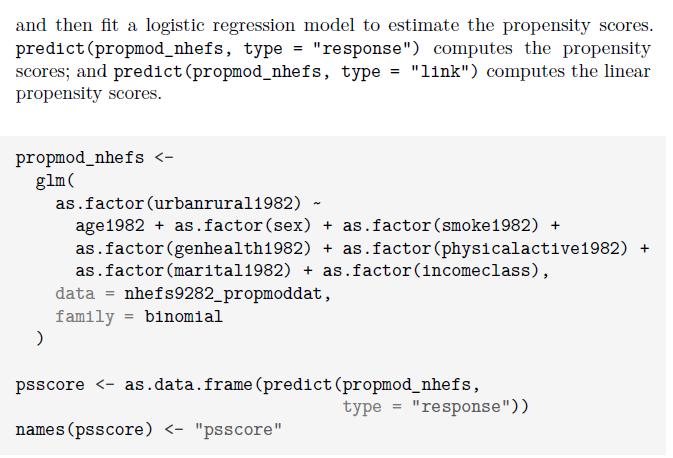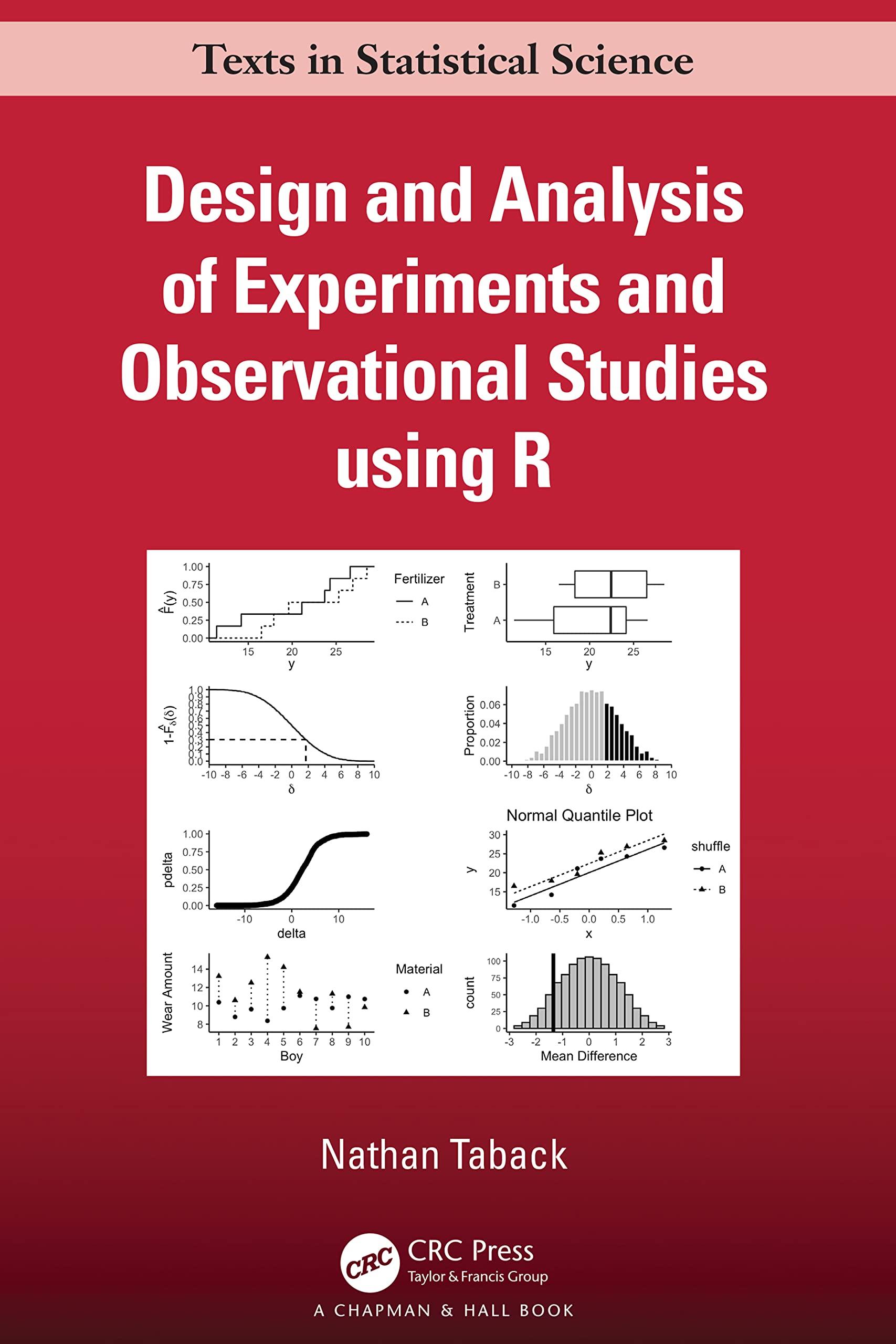Question:
Consider the data from Example 7.9. In Section 7.7.4 Computation Lab: Nearest Neighbour Propensity Score Matching,
marital1982 was included when fitting the propensity score model propmod_nhefs. Suppose a (naive) investigator forgot to include marital1982 in a propensity score model.
a. Fit a new propensity score model without marital1982.
b. Use the propensity scores from a. to match treatment and control units using nearest neighbour matching.
c. Check covariate balance post matching and compare with the results from Section 7.7.4 Computation Lab: Checking Overlap and Covariate Balance.
d. Estimate the treatment effect using the model specified in Equation (7.5) and compare with the results from Section 7.7.4 Computation Lab: Analysis of Outcome after Matching. How does including marital1982 alter the estimate of treatment effect.
Data from Example 7.9


Data from Section 7.7.4



Data from Equation 7.5

Transcribed Image Text:
Example 7.9 (Does where you live affect your weight?). The NHANES I Epidemiologic Follow-up Study (NHEFS) [CDC, 2021] is a national longitudinal study that was jointly initiated by the National Center for Health Statistics and the National Institute on Aging in collaboration with other agencies of the United States Public Health Service. The NHEFS was designed to investigate the relationships between clinical, nutritional, and behavioral factors assessed in the first National Health and Nutrition Examination Survey NHANES I and subsequent morbidity, mortality, and hospital utilization, as well as changes in risk factors, functional limitation, and institutionalization. The NHEFS cohort includes all persons 25-74 years of age who completed a medical examination at NHANES I in 1971-75 (n = 14,407). It is comprised of a series of follow-up studies, four of which have been conducted to date. The first wave of data collection was conducted for all members of the NHEFS cohort from 1982 through 1984. Continued follow-up of the NHEFS population was conducted in 1986, 1987, and 1992 using the same design and data collection procedures developed in the 1982-1984 NHEFS, with the exception that a 30-minute computer-assisted telephone interview was administered rather than a personal interview, and no physical measurements were taken. What is the effect of living in a city compared to city suburbs on weight gain? The first and fourth waves of the NHEFS provide an opportunity to design an

![]()



![]()






